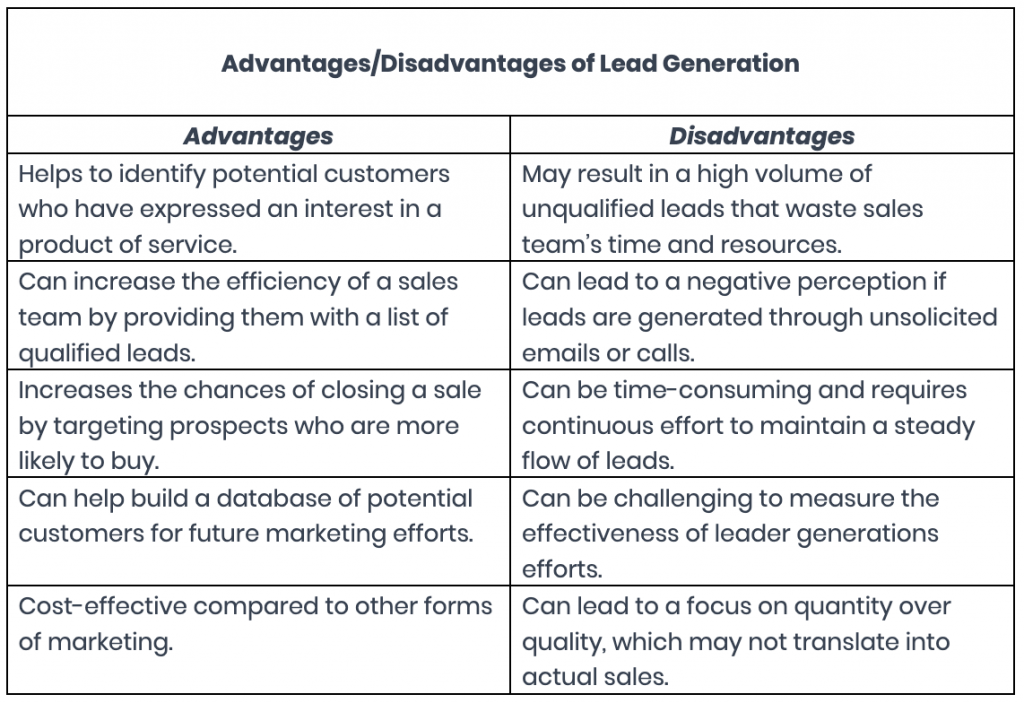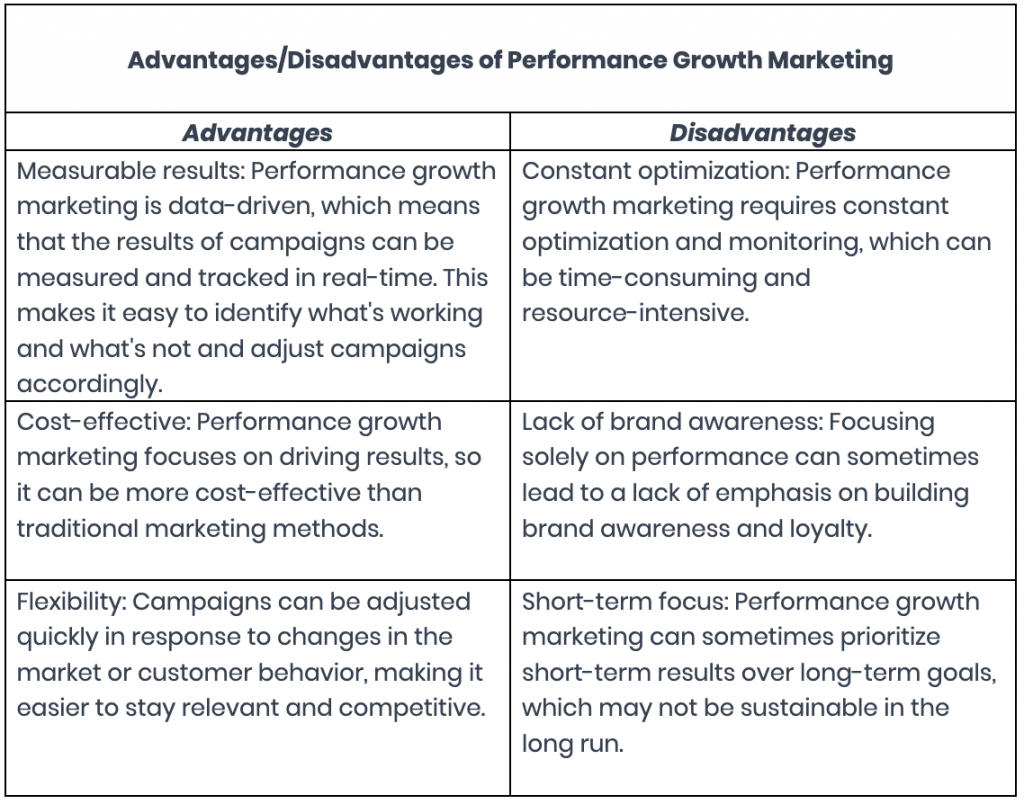Lead generation and performance growth marketing are fundamental in the world of digital marketing. While they share some similarities, there are key differences between the two that marketers and brand professionals should be aware of to maximize their marketing strategy.
Read on to explore the differences between lead generation and performance growth marketing and discover insights on how to effectively integrate both strategies into your marketing plan. Whether you’re a marketer looking to refine your abilities or are a business owner seeking to boost your revenue, understanding the nuances of these two approaches is essential for success.
What is lead generation and why is it used?
Lead generation is the process of identifying and attracting potential customers, or leads, with the goal of converting them into paying customers. This is typically done through a variety of tactics, such as creating targeted ads, optimizing landing pages, and offering valuable content in exchange for contact information.
The ultimate goal of lead generation is to build a database of leads that can be nurtured over time with additional marketing efforts, such as email campaigns and personalized content. Although there are several examples of lead generation, we’ll focus on three examples that outline how this strategy can be executed:
Content marketing
Content marketing is a strategic marketing approach focused on creating and distributing valuable, relevant, and consistent content to attract and retain a clearly defined audience — and, ultimately, to drive profitable customer action. For example, a company that sells organic skincare products might create blog posts, social media posts, and videos about the benefits of natural ingredients, skincare routines, and self-care practices
Email marketing
Email marketing is the practice of sending commercial messages to a group of people via email. A brief example of email marketing would be a promotional email sent by a retailer to their customers, offering a discount on a specific product or service. The email may include eye-catching graphics, personalized messaging, and a clear call to action to encourage recipients to make a purchase.
Social media marketing
A brief example of social media marketing could be a company creating and sharing engaging content on their social media platforms to attract and engage their target audience. For instance, a beauty brand might share tutorials and tips for applying makeup, showcase their products in visually appealing images or videos, and encourage followers to share their own beauty routines using a branded hashtag.

What is performance growth marketing and why is it used?
Performance growth marketing, on the other hand, is focused on achieving measurable growth in key performance indicators (KPIs), such as website traffic, engagement, and revenue. This is achieved through a variety of tactics, such as optimizing website design and user experience, improving search engine rankings, and increasing social media engagement.
The primary goal of performance growth marketing is to drive continuous improvement in KPIs over time. Much like “lead generation”, there are several examples of performance growth marketing, however, we’ll focus on three examples that outline how this strategy can be executed:
Search engine optimization (SEO)
Search engine optimization (SEO) is the process of optimizing a website to improve its ranking and visibility in search engine results pages (SERPs). It involves a set of techniques and strategies used to improve the quality and relevance of a website’s content, structure, and metadata to make it more appealing to search engine algorithms. The goal of SEO is to increase organic traffic to a website by ranking higher in search engine results for relevant search queries.
Pay-per-click (PPC) advertising
Pay-per-click (PPC) advertising is a digital marketing strategy where advertisers pay each time a user clicks on one of their ads. A common example of PPC advertising is Google Ads, where businesses bid on keywords related to their product or service and their ad appears at the top of a search engine’s results pages. For instance, if a user searches for “best coffee shop in New York City,” a coffee shop that bids on that keyword will have its ad displayed at the top of the search results. The advantage of PPC advertising is that businesses only pay when someone clicks on their ad, providing a cost-effective way to reach potential customers. However, a disadvantage is that it can be costly, especially for highly competitive keywords.
Conversion rate optimization (CRO)
Conversion rate optimization (CRO) refers to the process of improving the website or landing page experience to increase the percentage of visitors who take a desired action, such as filling out a form, making a purchase, or subscribing to a newsletter. An example of CRO would be conducting A/B testing on a website’s checkout page to determine if changing the color or placement of the “checkout” button leads to a higher conversion rate. Another example could be optimizing the website’s navigation menu to ensure visitors can easily find what they are looking for, leading to increased engagement and conversions.

Differences between lead generation and performance growth marketing
While lead generation and performance growth marketing may seem similar, there are some key differences that set them apart. One of the biggest differences is the focus on short-term versus long-term results. Lead generation is often focused on building a pipeline of potential customers for future sales, while performance growth marketing is focused on driving immediate results in KPIs.
Another key difference is the tactics used to achieve these goals. Lead generation is typically focused on tactics such as paid search, social media advertising, and content marketing, while performance growth marketing often involves more technical tactics such as website optimization, SEO, and analytics.
Which strategy to use and when
These are important factors to consider when choosing the right marketing strategy for your business. The first step is to identify your business goals and needs, as different marketing strategies may be more effective for different goals. For example, lead generation may be a more suitable strategy for a business looking to increase sales leads, while performance growth marketing may be more effective for a business looking to increase website traffic and engagement.
Once your goals and needs are identified, it is important to determine the target audience and market. This involves researching and understanding the characteristics and behaviors of the target audience, as well as identifying the market conditions and competition. Budget considerations are also important, as different marketing strategies may have different costs and require different resources. It is important to consider the cost-effectiveness and potential return on investment (ROI) of each strategy.
Ultimately, choosing the right marketing strategy requires a combination of understanding business goals, target audience, market conditions, and budget considerations. It is important to evaluate and measure the effectiveness of each strategy to determine which is most successful in achieving the desired outcomes.
Bottom line
Without a doubt, both lead generation and performance growth marketing are important components of a successful digital marketing strategy. By understanding the differences between the two, marketers can create a comprehensive marketing plan that leverages the strengths of both approaches to achieve their goals.
ForceBrands offers end-to-end hiring solutions for all stages of growth. Whether you’re just starting to hire or are looking for the next step in your career, we’re here to help you be a positive Force that makes an impact.






